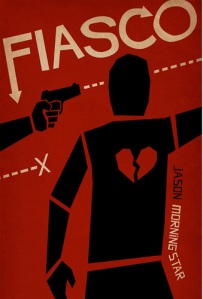What’s hot in indie story games seminar and a review of 2014
This is the seminar from Dragonmeet on 6th December 2014. “Some of the most passionate story gamers in the country share games you should know about, what’s exciting them most right now, and how to get the game you want. We also cover a review of the trends in 2014 in indie rpg and story games.”
Length: 74 minutes.
![]() Subscribe to our podcast (Feedburner)
Subscribe to our podcast (Feedburner)
Participants:
Anita Murray is the Contribution to Irish Gaming winner 2013 and the Irish National Game Writer Award winner for 2012. As well as organising design Playstorms for London Indiemeet, she’s also the founder and editor-in-chief of The Gazebo (an Irish and UK-based online RPG ‘zine) and a Twitching Curtain podcaster.
James Torrance is the founder of the Cambridge One-Shot Roleplaying Game group, which he created in February this year and which has grown to nearly a hundred members. He credits low-prep indie games with making the Cambridge group’s informal drop-in play model possible.
Joanna Piancastelli is a regular host on the story gaming podcast The Twitching Curtain, and has GM’d for indie Games on Demand on both sides of the Atlantic. She recently won an award in the first Golden Cobra Challenge for her superpower freeform game Unheroes.
Rob Carnel began reviewing rpgs in 1993 with the zine Carnel and he’s currently the editor of the webzine Thee Rapture in which he reviews many new, experimental games. He’s also one of the most prolific GMs in the London indie scene, all of which has led him to have an extensive knowledge of games and mechanisms.
Stephanie Jackson is co-organiser of London Indie RPG Meetup group and has been avidly devouring indie games for around five years now, with increasing expeditions into the world of freeform larp and game design.
With moderator Epistolary Richard
Schedule
- Joanna Piancastelli on Always / Never / Now by Will Hindmarch (00:00:23)
- James Torrance on Intrepid by John Keyworth (00:01:50)
- Anita Murray talks on Night Witches by Jason Morningstar (00:03:01)
- Rob Carnel on Kingdom by Ben Robbins and the Protocol game series by Jim Pinto (00:06:03)
- Stephanie Jackson on Cheat your own Adventure by Shane Mclean (00:08:54)
- Joanna Piancastelli on the increasing culture of playtesting (00:13:33)
- Rob Carnel on the impact of Patreon (00:20:04)
- Anita Murray on collaborative game design (00:29:48)
- Stephanie Jackson on sharing characters and tweaking games (00:36:16)
- Getting a game and James Torrance on setting up an indie gaming group (00:42:04)
- Open Q&A intro (00:52:45)
- Gaming in Europe (00:53:07)
- Gaming online (00:55:37)
- Designing and “the games you haven’t played” (00:59:17)
- Game reviewing and finding the games you might like (01:07:14)
- Getting your game playtested and then published (01:10:47)
Games Mentioned
- A Doomed Pilgrim (The Sundered Land) – http://nightskygames.com/welcome/game/TheSunderedLand
- A Penny for My Thoughts – http://www.evilhat.com/home/apennyformythoughts/
- Always / Never / Now – http://rpg.drivethrustuff.com/product/114457/AlwaysNeverNow
- Apocalypse World – http://apocalypseworld.com/
- Apocalypse World: Dark Age – http://lumpley.com/index.php/anyway/thread/780
- Atlas Reckoning – (Still in playtest, no link available)
- Cheat Your Own Adventure – http://www.ukroleplayers.com/wiki/Cheat_Your_Own_Adventure
- Death of a Gilded Age – http://www.magcloud.com/browse/issue/680086
- Don’t Rest Your Head – http://www.evilhat.com/home/dontrestyourhead2/
- Dungeon World – http://www.dungeonworld.com/
- Fiasco – http://www.bullypulpitgames.com/games/fiasco/
- Havoc Brigade – http://www.magcloud.com/browse/issue/767715
- Hell 4 Leather – http://www.princeofdarknessgames.com/Hell4Leather/
- Intrepid – http://rpg.drivethrustuff.com/product/121044/IntrepidAStorytellingAdventure
- Kingdom – http://www.lamemage.com/kingdom/
- Love in the Time of Seið – http://norwegianstyle.wordpress.com/2010/06/04/loveinthetimeof-
sei%C3%B0/ - Microscope – http://www.lamemage.com/microscope/
- Montsegur 1244 – http://thoughtfulgames.com/montsegur1244/
- Night Witches – http://www.bullypulpitgames.com/news/2014/03/21/pressreleasebullypulpit-
gamesannouncesnightwitches/ - Pathfinder – http://paizo.com/pathfinder
- Project: Dark – https://www.kickstarter.com/projects/wordstudio/projectdark
- http://projectdarkrpg.tumblr.com/
- Protocol – http://postworldgames.com/protocolgameseries/
- ViewScream – http://rpg.drivethrustuff.com/product/113064/ViewScream
- Witch: Road to Lindisfarne – http://www.ukroleplayers.com/witch/
Events and Groups Mentioned
- Conception – http://www.conceptionuk.org/
- Dragonmeet – http://www.dragonmeet.co.uk/
- Dutch Invaders – http://www.ukroleplayers.com/forum/viewforum.php?f=183
- Indie+ (online community) – http://indieplus.org/doku.php
- Indiecon – http://www.indiecon.net/
- London Indie RPG Meetup – http://www.meetup.com/LondonIndieRPGMeetupGroup/
- Nine Worlds – http://nineworlds.co.uk/
- Playtest UK – http://www.playtest.co.uk/
- Story Games Seattle – http://www.meetup.com/StoryGamesSeattle/
- The Game Kitchen – http://thegamekitchen.org/
Other Resources
- Counter – http://countermagazineonline.wordpress.com/
- DriveThruRPG – http://rpg.drivethrustuff.com/
- Evolution of a character sheet article (Night Witches by Jason Morningstar) – http://analoggamestudies.org/2014/12/visualdesignasmetaphortheevolutionofacharacter-
sheet/ - Larps from the Factory – http://larpfactorybookproject.blogspot.co.uk/p/welcome.html
- Patreon – http://www.patreon.com/
- Patreon: How to be successful on Patreon (CrowdCrux article) – http://www.crowdcrux.com/how-
tobesuccessfulonpatreon/ - Patreon: Epidiah Ravachol: Worlds Without Master – http://www.patreon.com/Epidiah
- Patreon: Grant Howitt – http://www.patreon.com/gshowitt
- Patreon: John Wick: Wicked Words – http://www.patreon.com/johnwickpresents
- PlaGMaDA: The Play Generated Map & Document Archive – http://plagmada.org/Home.html
- Play Unsafe – http://theunstore.com/index.php/unstore/game/49
- Play With Intent – http://playwithintent.wordpress.com/
- Storium – https://storium.com/
- That one episode of Fiasco on Tabletop – http://www.youtube.com/watch?v=uuJizhyfy4
- The concept of “Yes, and” – http://99u.com/articles/7183/theyesandapproachlessegomore-
opennessmorepossibility - The problem of Early Access – http://www.youtube.com/watch?v=CmLz00L6CmY
- What is GDP? – http://en.wikipedia.org/wiki/Gross_domestic_product
Epistolary Richard also produced these flyers for the day (PDFs):












